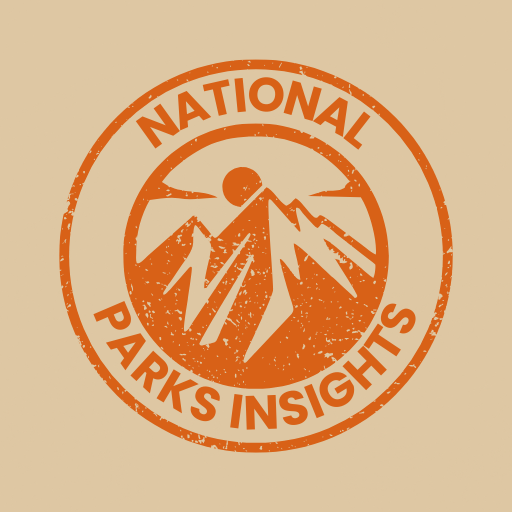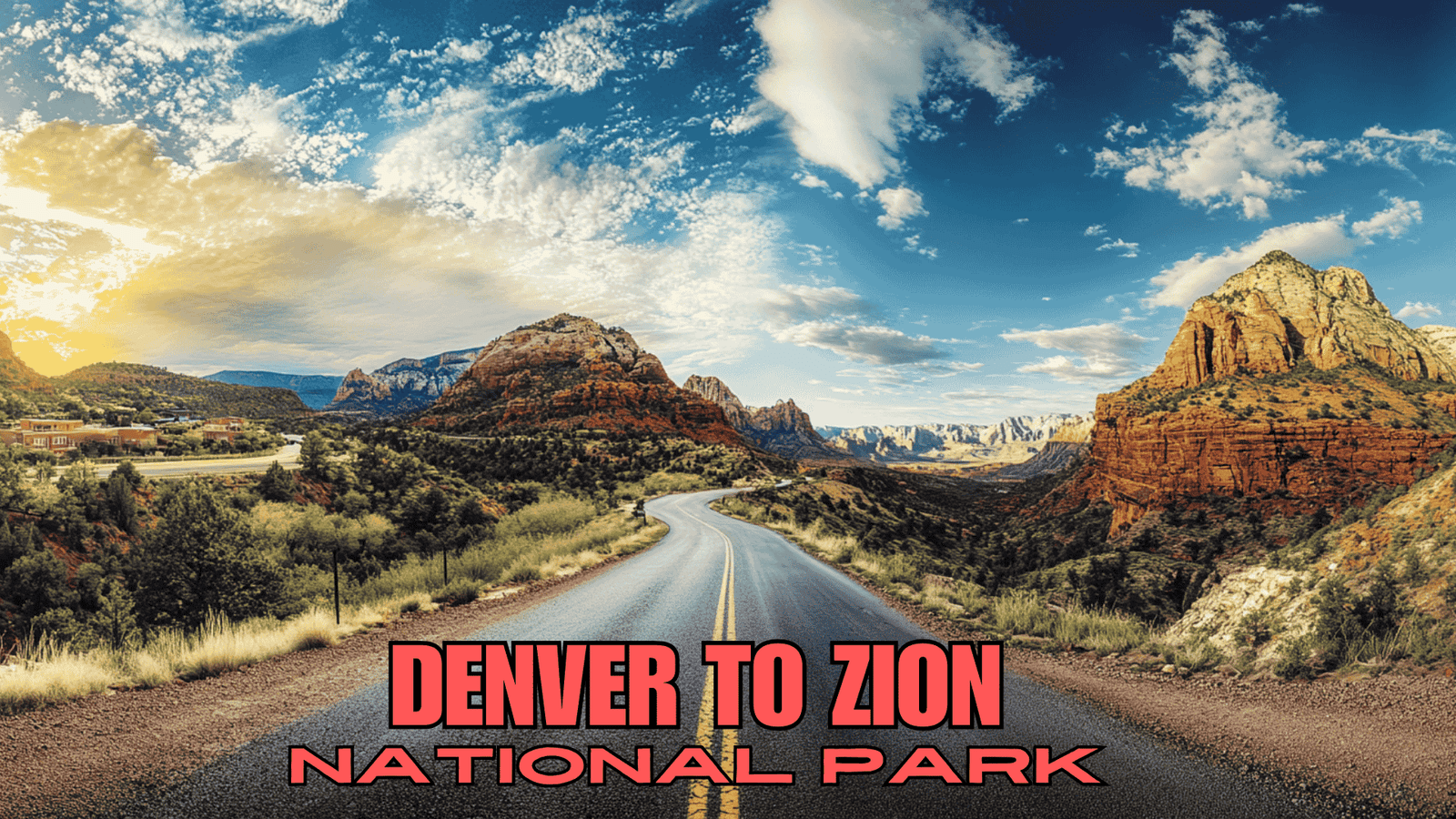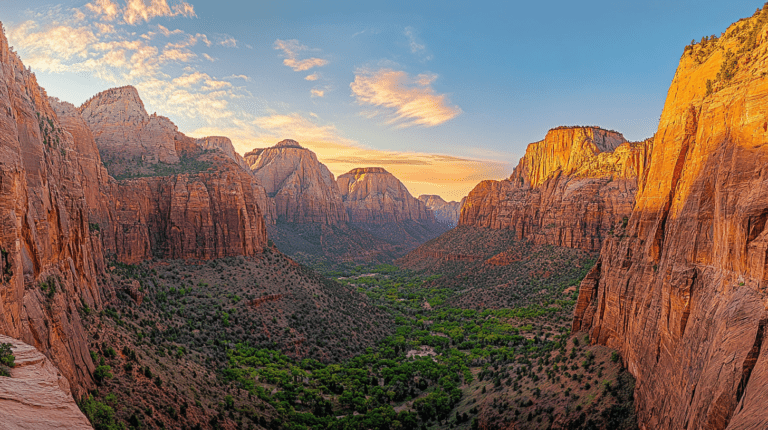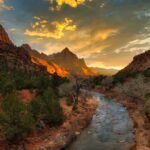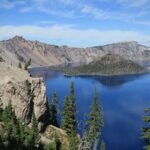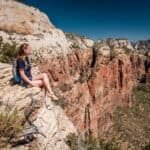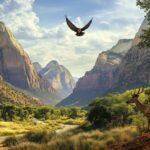Denver to Zion National Park
Introduction
Embarking on a road trip from Denver to Zion National Park is an adventure that promises breathtaking landscapes, diverse ecosystems, and unforgettable experiences. This journey, spanning approximately 580 miles, takes you through the heart of the American West, offering a perfect blend of urban excitement and natural wonders.
As you leave the mile-high city of Denver, you’ll traverse the Rocky Mountains, cross the high deserts of Utah, and finally descend into the stunning red rock country of southwestern Utah. Along the way, you’ll have the opportunity to explore some of America’s most iconic national parks, each with its own unique geological features and outdoor activities.
This road trip is more than just a means to reach Zion National Park; it’s a journey that showcases the dramatic changes in landscape and climate across the western United States. From the snow-capped peaks of Colorado to the otherworldly rock formations of Utah, every mile offers something new to discover.
Route Options
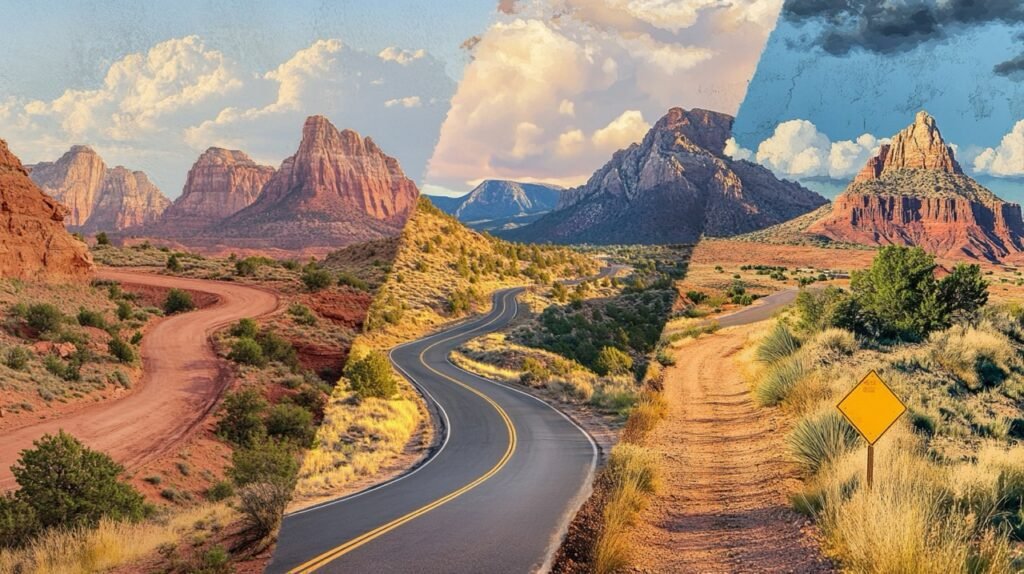
When planning your journey from Denver to Zion National Park, you have several route options, each offering unique landscapes and attractions. Here are the main routes to consider:
The Direct Route: I-70 West and I-15 South
Distance: Approximately 580 miles
Estimated drive time: 9-10 hours (without stops)This is the fastest and most direct route:
- Take I-70 West from Denver through Colorado and into Utah
- Near Sulphurdale, UT, merge onto I-15 South
- Take exit 16 for UT-9 East to reach Zion National Park
Highlights: This route takes you through the heart of the Rocky Mountains, past world-class ski resorts, and through the scenic landscapes of central Utah.
The Scenic Route: US-50 and Scenic Byways
Distance: Approximately 700 miles
Estimated drive time: 12-14 hours (without stops)For those with more time who want to explore:
- Take US-50 West from Denver (known as the “Loneliest Road in America”)
- Connect with various scenic byways in Utah, such as UT-12 and UT-24
- Join I-15 South near Beaver, UT, then take exit 16 for UT-9 East to Zion
Highlights: This route allows you to explore Black Canyon of the Gunnison National Park, Capitol Reef National Park, and Grand Staircase-Escalante National Monument.
The National Parks Route
Distance: Approximately 750 miles
Estimated drive time: 13-15 hours (without stops)For national park enthusiasts:
- Take I-70 West to Moab, UT
- Explore Arches and Canyonlands National Parks
- Head south on US-191 and UT-24 to Capitol Reef National Park
- Continue on UT-12 to Bryce Canyon National Park
- Finally, take US-89 and UT-9 to Zion National Park
Highlights: This route maximizes your national park experiences, allowing you to visit up to five national parks on your way to Zion.Choose your route based on your interests, available time, and desired pace of travel. Remember, the journey is as important as the destination, so consider what you’d like to see and experience along the way.
Planning Your Denver CO to Zion National Park Road Trip
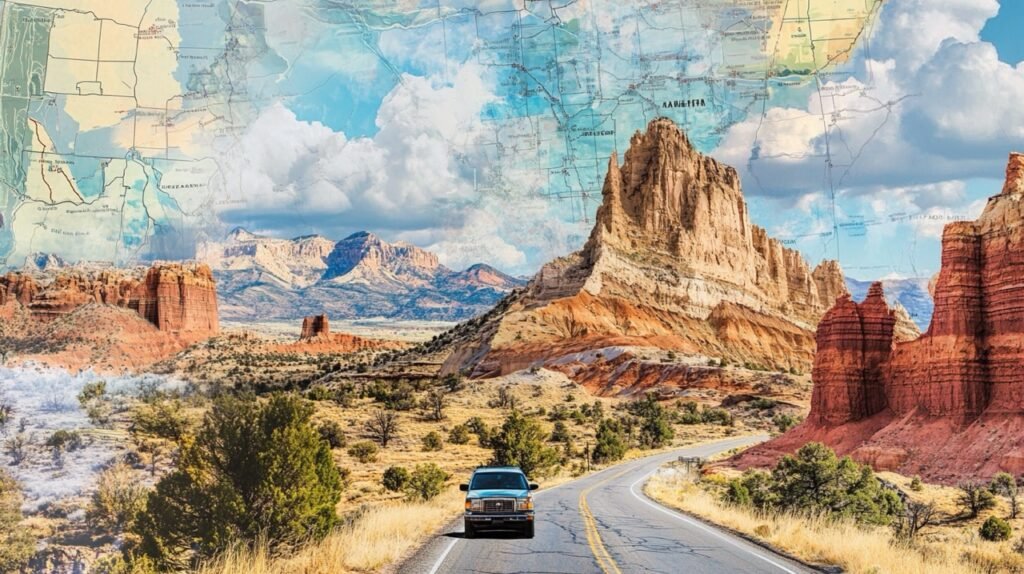
When planning your road trip from Denver to Zion National Park, consider the following factors to optimize your journey:
- Seasonal Considerations: The drive time and route options can vary significantly depending on the season. In winter, some mountain passes may be closed or require snow chains, potentially increasing your drive time. Summer offers more daylight for driving but can also bring higher temperatures and more traffic.
- Strategic Stops: Break up your journey with stops at key points of interest. Some popular stops include:
- Glenwood Springs, CO (Hot springs and adventure activities)
- Moab, UT (Gateway to Arches and Canyonlands National Parks)
- Capitol Reef National Park, UT (Often less crowded than other Utah parks)
- Vehicle Preparation: Ensure your vehicle is in good condition for a long journey through varied terrain. Consider a tune-up before departure and check your tires, brakes, and fluids.
- Entertainment and Comfort: Prepare a playlist or audiobooks for the long stretches of highway. Pack snacks, water, and a cooler to reduce the need for frequent stops.
- Flexibility: Allow extra time in your schedule for unexpected delays or spontaneous detours. Some of the best memories often come from unplanned adventures!
By considering these factors, you can ensure a smoother and more enjoyable road trip from Denver CO to Zion National Park, making the journey as rewarding as the destination itself.
Denver CO to Zion National Park: A Journey Through the American West
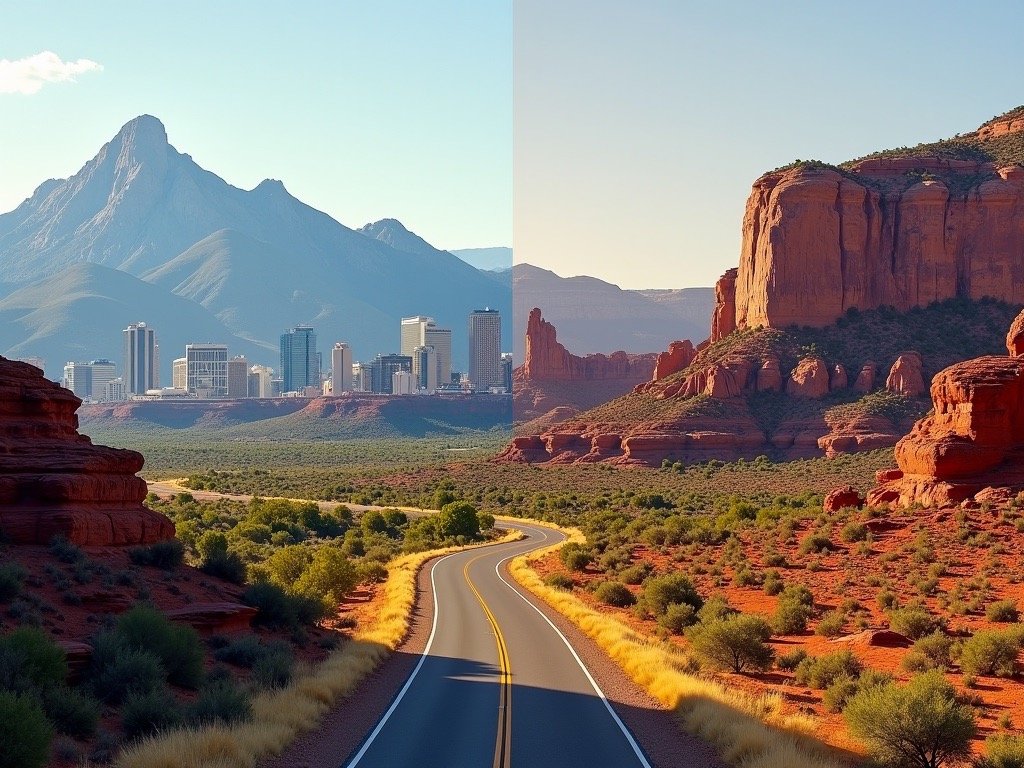
The route from Denver, Colorado to Zion National Park is a classic American road trip that takes you through some of the most stunning landscapes in the western United States. This journey spans approximately 636 miles (1,024 kilometers) and crosses three states: Colorado, Utah, and a small portion of Arizona.
Denver to Zion National Park Drive Time
The total drive time from Denver to Zion National Park typically ranges from 9 to 11 hours, depending on your chosen route and stops along the way. However, it’s important to note that this is pure driving time and doesn’t account for rest breaks, fuel stops, or time spent enjoying the numerous attractions en route.
For a more enjoyable experience, many travelers choose to break up the journey over 2-3 days, allowing time to explore the diverse landscapes and attractions along the way.
This approach not only makes the drive more manageable but also turns the journey itself into a memorable part of your vacation.
Planning Your Trip – Denver to Zion National Park
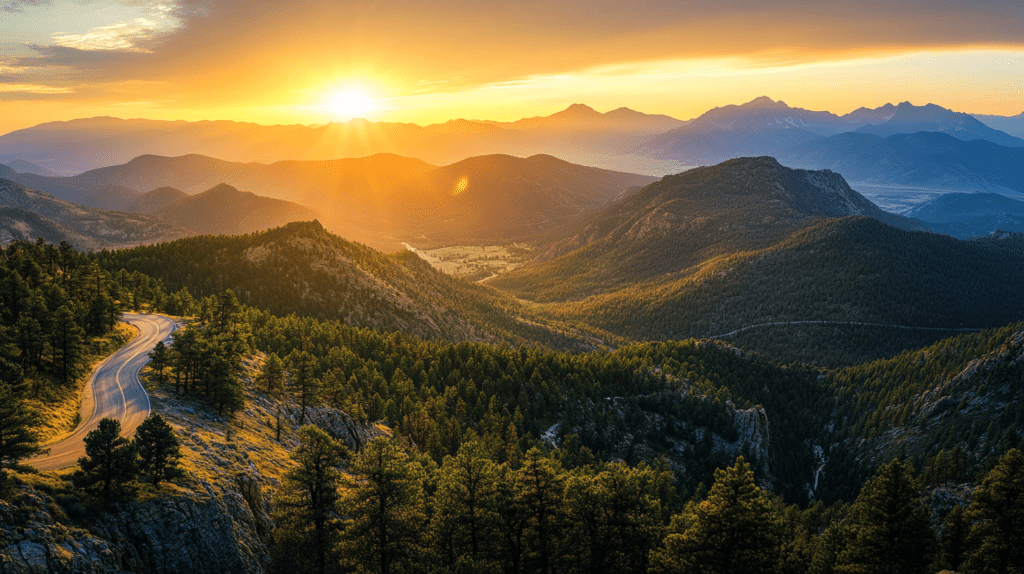
Planning is key to ensuring a smooth and enjoyable road trip from Denver to Zion National Park. Here’s what you need to know:
Best time to travel
The ideal time for this road trip largely depends on your preferences and tolerance for weather conditions:
- Spring (April to May): Offers mild temperatures and blooming wildflowers. However, some high-elevation roads might still be closed due to snow.
- Summer (June to August): Provides the most reliable weather for traveling, but expect crowds and high temperatures, especially in Utah.
- Fall (September to October): Features comfortable temperatures and stunning fall colors, particularly in the Rocky Mountains.
- Winter (November to March): Not recommended unless you’re experienced with winter driving. Many park facilities may be closed or have limited access.
Estimated driving time and distance
The direct route from Denver to Zion National Park is approximately 580 miles and takes about 10 hours of non-stop driving. However, we recommend breaking up the journey to fully appreciate the sights along the way.
Recommended duration for the trip – Denver to Zion National Park
To truly experience the journey and the destination, we suggest allocating at least 7-10 days for your trip:
- 1 day in Denver
- 3-4 days for stops and explorations along the route
- 3-5 days in Zion National Park
This timeframe allows for a more relaxed pace, giving you the opportunity to explore other national parks en route and spend quality time in Zion. If you have more time, you can easily extend your stay at various points of interest.
Remember, this is a flexible itinerary. You can adjust it based on your interests, available time, and energy levels. The key is to strike a balance between covering ground and taking time to immerse yourself in the diverse landscapes and experiences this route offers.
Route Overview
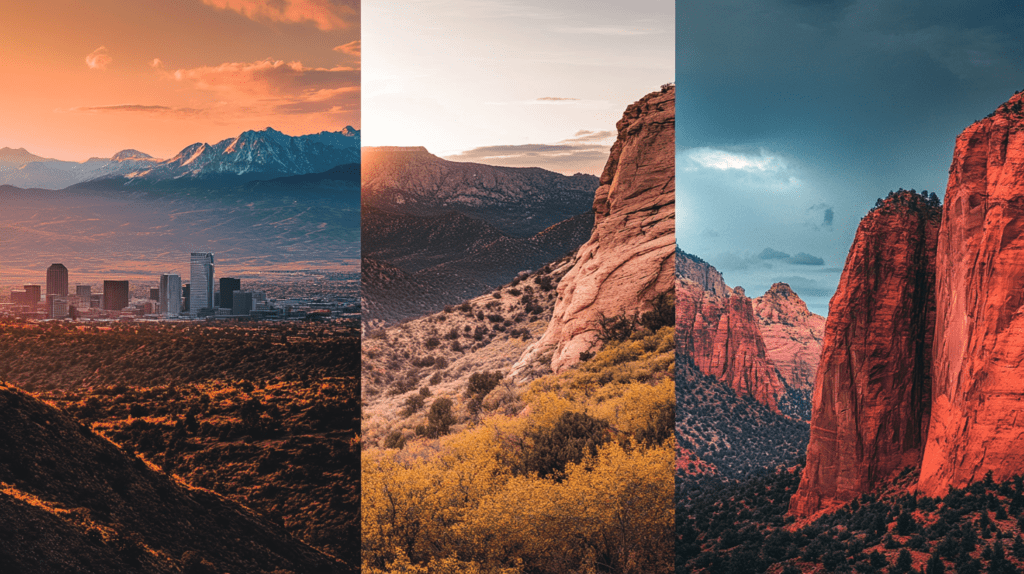
The journey from Denver to Zion National Park takes you through some of the most scenic landscapes in the American West. Let’s break down the major points along the route and some suggested stops.
Major cities and landmarks along the way
- Denver, Colorado: Your starting point, the Mile High City
- Rocky Mountain National Park, Colorado: About 1.5 hours from Denver
- Grand Junction, Colorado: Gateway to Colorado’s wine country
- Moab, Utah: Adventure hub and gateway to Arches and Canyonlands National Parks
- Capitol Reef National Park, Utah: Often overlooked but equally stunning
- Bryce Canyon National Park, Utah: Famous for its hoodoos (tall, thin rock spires)
- Zion National Park, Utah: Your final destination
Suggested stops and detours
- Rocky Mountain National Park: Take a drive on Trail Ridge Road for breathtaking alpine views.
- Colorado National Monument: Just outside Grand Junction, this park offers spectacular canyon scenery.
- Arches National Park: Home to over 2,000 natural stone arches, including the famous Delicate Arch.
- Canyonlands National Park: Known for its dramatic desert landscape carved by the Colorado River.
- Goblin Valley State Park: A lesser-known gem featuring thousands of hoodoos, often called “goblins.”
- Capitol Reef National Park: Explore the Waterpocket Fold, a geologic monocline extending almost 100 miles.
- Bryce Canyon National Park: Hike among the hoodoos and enjoy some of the darkest night skies in North America.
These stops can be adjusted based on your interests and time constraints. Each offers unique landscapes and outdoor experiences, giving you a comprehensive taste of the diverse geography between Denver and Zion National Park.
Remember, while it’s tempting to try and see everything, it’s often more enjoyable to spend quality time at fewer locations rather than rushing through many.
Explore Zion National Park Caves
Preparing for the Journey
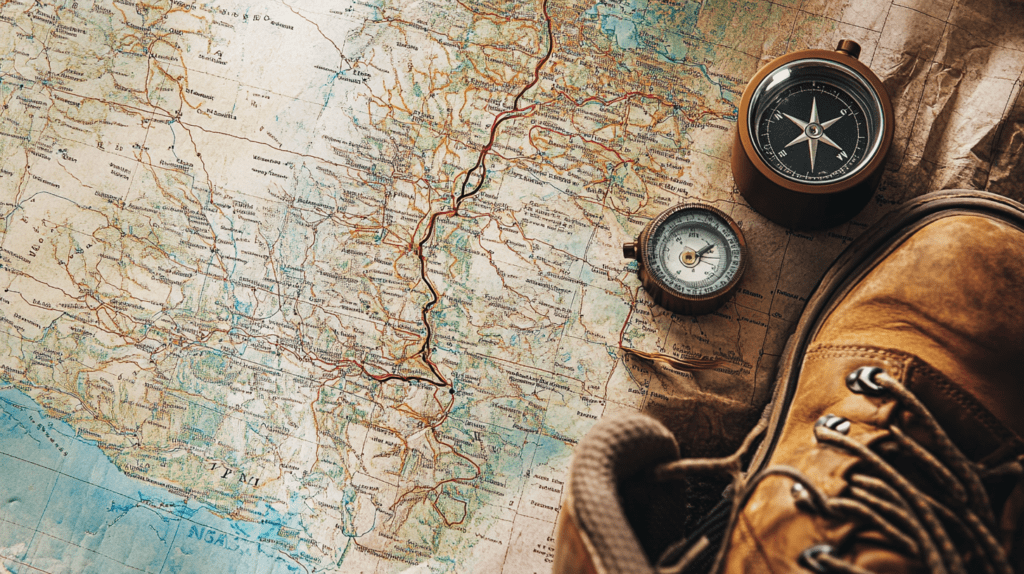
Proper preparation is crucial for a successful road trip from Denver to Zion National Park. This section will cover essential tips to ensure your journey is safe, comfortable, and enjoyable.
Vehicle preparation tips
- General maintenance: Before embarking on your trip, ensure your vehicle is in good condition. This includes:
- Oil change if needed
- Checking tire pressure and tread
- Testing brakes
- Examining all fluid levels
- Air conditioning: With potentially high temperatures in Utah, a functioning AC is crucial.
- Emergency kit: Pack a basic vehicle emergency kit including:
- Jumper cables
- Flashlight
- Basic tools
- Spare tire and jack
Essential items to pack
- Navigation:
- Physical maps (cell service can be unreliable in remote areas)
- GPS device or smartphone with offline maps downloaded
- Sun protection:
- Sunscreen
- Sunglasses
- Wide-brimmed hats
- Clothing:
- Layers for varying temperatures
- Sturdy hiking boots
- Rain gear
- Hydration:
- Reusable water bottles
- Water filtration system for hiking
- Food:
- Non-perishable snacks
- Cooler for perishables
- First aid kit
- National Parks Pass (if planning to visit multiple parks)
Road safety considerations
- Plan your route: Know where you’re going and where you can stop for fuel, food, and rest.
- Check weather conditions: Be aware of potential weather changes, especially when crossing mountain passes.
- Wildlife awareness: Be cautious of wildlife on the roads, especially during dawn and dusk.
- High altitude precautions: If you’re not used to high altitudes, take it easy when first arriving in mountainous areas to avoid altitude sickness.
- Stay connected: Inform someone of your travel plans and check in regularly.
- Rest adequately: Don’t push yourself to drive when tired. Plan for regular breaks and overnight stops.
- Carry cash: Some remote areas might not accept credit cards.
By following these preparation tips, you’ll be well-equipped to handle the challenges and enjoy the adventures that come with this epic road trip. In the next section, we’ll explore your starting point, Denver, and what to see before you hit the road.
Private tours of Zion National Park
Denver: Starting Point
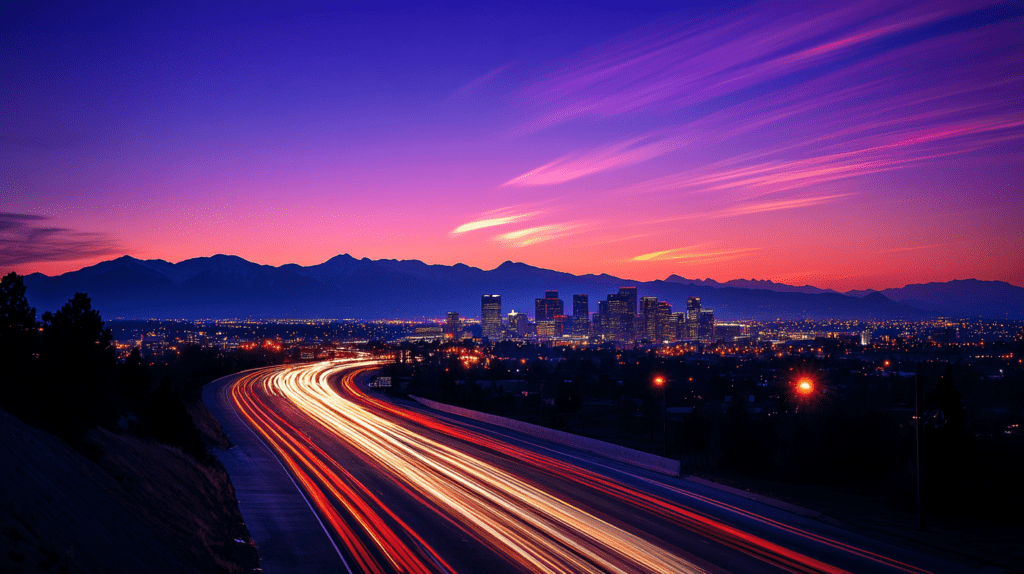
Before embarking on your journey to Zion National Park, take some time to explore Denver, the Mile High City. Known for its vibrant culture, outdoor activities, and craft beer scene, Denver offers a perfect starting point for your adventure.
Brief introduction to Denver
Denver, the capital of Colorado, sits at an elevation of exactly one mile above sea level. It’s a city that seamlessly blends urban sophistication with a love for the outdoors. With 300 days of sunshine annually, Denver is an ideal place to begin your road trip, offering a taste of city life before you venture into the wilderness.
Must-see attractions before departure
- Red Rocks Park and Amphitheatre:
- A naturally formed, world-famous music venue
- Offers hiking trails with stunning views of Denver and the plains
- Denver Botanic Gardens:
- 24 acres of beautiful plants from around the world
- A peaceful oasis in the heart of the city
- Denver Art Museum:
- Known for its collection of American Indian art
- Features a striking architectural design
- Union Station:
- Historic train station turned dining and shopping hub
- Great spot for people-watching and grabbing a meal
- Larimer Square:
- Denver’s oldest and most historic block
- Filled with shops, restaurants, and Victorian buildings
Where to fuel up and stock supplies
- REI Denver Flagship Store:
- Located in the restored Denver Tramway Building
- Perfect for last-minute outdoor gear and supplies
- Trader Joe’s or Whole Foods Market:
- Multiple locations throughout Denver
- Great for stocking up on healthy snacks and road trip essentials
- King Soopers:
- Local supermarket chain
- Offers a good selection of groceries and basic camping supplies
- Bass Pro Shops:
- Large outdoor recreation retailer
- Good for fishing gear, camping equipment, and outdoor clothing
- Gas stations:
- Fill up your tank at one of the many stations along I-70 or I-25
- Consider using GasBuddy app to find the best fuel prices
Before leaving Denver, ensure your vehicle is fully fueled, your supplies are stocked, and you’ve had a chance to acclimate to the altitude if you’re not used to it. The city’s elevation can affect some visitors, so it’s wise to take it easy on your first day if you’ve traveled from a lower altitude.
As you depart Denver, you’ll be heading west towards the Rocky Mountains, beginning the scenic journey that will ultimately lead you to the red rocks of Zion National Park. In the next section, we’ll explore the highlights along your route, starting with the majestic Rocky Mountain National Park.
Highlights Along the Route – Denver to Zion National Park
The journey from Denver to Zion National Park is filled with breathtaking landscapes and iconic national parks. Here are some of the must-see highlights along your route:
Rocky Mountain National Park
Located about 1.5 hours northwest of Denver, this park is a spectacular introduction to the natural wonders you’ll encounter on your trip.
- Trail Ridge Road: Drive this scenic byway for sweeping mountain views.
- Bear Lake: A popular spot for hiking and photography.
- Wildlife viewing: Look for elk, bighorn sheep, and marmots.
Tip: If time allows, spend a full day here to truly appreciate the park’s beauty.
Arches National Park
As you enter Utah, Arches National Park near Moab showcases a landscape of contrasting colors, landforms, and textures.
- Delicate Arch: Hike to Utah’s most famous natural arch.
- The Windows Section: Easy trails to several impressive arches.
- Landscape Arch: One of the world’s longest natural stone arches.
Canyonlands National Park
Just a short drive from Arches, Canyonlands offers a more rugged, less crowded experience.
- Island in the Sky: Drive this mesa top for incredible panoramic views.
- Mesa Arch: A relatively easy hike to a stunning stone arch.
- Grand View Point Overlook: Offers expansive views of the park’s canyons.
Capitol Reef National Park
Often overlooked, Capitol Reef is a hidden gem along your route.
- Scenic Drive: A 7.9-mile paved road through the heart of the park.
- Fruita Historic District: Pick fruit from the park’s orchards when in season.
- Hickman Bridge: A moderate hike to a large natural bridge.
Bryce Canyon National Park
Known for its unique geology, Bryce Canyon is home to the largest concentration of hoodoos (irregular rock columns) in the world.
- Sunrise/Sunset Point: Witness the changing colors of the hoodoos.
- Navajo Loop Trail: A popular trail that takes you into the amphitheater.
- Bryce Canyon Scenic Drive: 18-mile road with 13 viewpoints.
Each of these parks offers a unique perspective on the diverse landscapes of the American West. While it might be tempting to rush through to reach Zion, taking the time to explore these parks will greatly enrich your road trip experience.
Remember to check park websites for current conditions, entry fees, and any reservations that might be required. In our next section, we’ll focus on your final destination: the awe-inspiring Zion National Park.
Arriving at Zion National Park
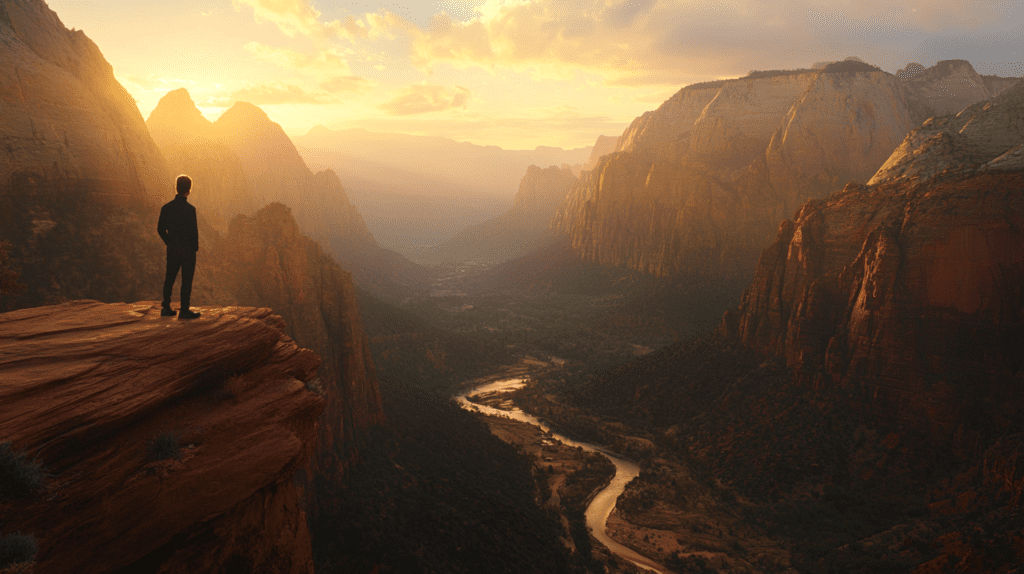
After a scenic journey through some of America’s most stunning landscapes, you’ll arrive at the crowning jewel of your trip: Zion National Park. Known for its towering sandstone cliffs, narrow canyons, and diverse plant and animal life, Zion offers a fitting finale to your Denver-to-Zion adventure.
Introduction to Zion National Park
Zion National Park, established in 1919, is Utah’s first national park. The park is known for its unique geography, where you’ll find yourself looking up at massive canyon walls instead of down into them. The Virgin River, which carved these canyons over millions of years, continues to shape the park’s landscape.
Park entrance information and fees
- Entrance Fee: $35 per vehicle, valid for 7 days
- Annual Pass: $80, grants access to all national parks for a year
- Park Hours: Open 24/7 year-round, though some facilities have seasonal hours
Note: During peak season (March through November), Zion Canyon Scenic Drive is accessible only by shuttle bus to reduce traffic congestion.
Maximize Your Adventure: Zion National Park Entrance Fee Breakdown for 2024
Overview of main attractions and hikes
- Zion Canyon Scenic Drive
- 6-mile scenic route along the canyon floor
- Accessible only by shuttle during peak season
- Angels Landing
- Strenuous 5.4-mile round trip hike
- Offers breathtaking views but not for those with a fear of heights
- Requires a permit obtained through a lottery system
- The Narrows
- Wade through the Virgin River between towering canyon walls
- Can be done as a bottom-up day hike or a top-down overnight trip (permit required)
- Emerald Pools
- A series of pools and waterfalls
- Trails range from easy to moderate
- Observation Point
- Strenuous 8-mile round trip hike
- One of the highest points in the park with panoramic views
- Kolob Canyons
- Less crowded section of the park
- Offers scenic drive and several hiking trails
Remember to check the park’s official website for current conditions, as some trails may be closed due to weather or maintenance. In the next section, we’ll discuss accommodation options in and around Zion National Park to help you plan your stay.
Where to Stay
Choosing the right accommodation can greatly enhance your Zion National Park experience. Whether you prefer camping under the stars or staying in a comfortable lodge, there are options to suit various preferences and budgets.
Camping options in and around Zion
- Watchman Campground
- Located inside the park, near the south entrance
- 195 sites, some with electric hookups
- Reservations recommended, especially during peak season
- South Campground
- Also, inside the park, near the south entrance
- 117 sites, no hookups available
- First-come, first-served basis
- Lava Point Campground
- Located in a more remote area of the park
- 6 primitive sites, no water available
- First-come, first-served basis, open seasonally
Nearby hotels and lodges
- Zion Lodge
- The only in-park lodging option
- Offers hotel rooms, suites, and cabins
- Advance reservations highly recommended
- Springdale accommodations
- Numerous hotels and motels just outside the park entrance
- Options include:
- Hurricane and St. George
- Towns within an hour’s drive of Zion
- Offer more affordable options and chain hotels
Unique accommodation experiences
- Under Canvas Zion
- Luxury glamping experience near the park
- Offers safari-style tents with comfortable amenities
- Zion Ponderosa Ranch Resort
- Located on the eastern edge of the park
- Offers a variety of accommodations from camping to vacation homes
- Treehouse rentals
- Several unique treehouse accommodations available in the area
- Provides a novel way to experience the landscape
When choosing your accommodation, consider factors such as proximity to the park, your planned activities, and the time of year you’re visiting. During peak season (summer months), accommodations fill up quickly, so it’s advisable to book well in advance.
Remember, staying inside the park or in nearby Springdale gives you easier access to the shuttle system and allows you to maximize your time exploring Zion. However, staying a bit further out can often provide more affordable options and a chance to explore the broader region.
In the next section, we’ll provide some essential tips for exploring Zion National Park to help you make the most of your visit.
Tips for Exploring Zion National Park
To make the most of your visit to Zion National Park, consider these essential tips that cover popular hiking trails, safety precautions, and the best times for various activities.
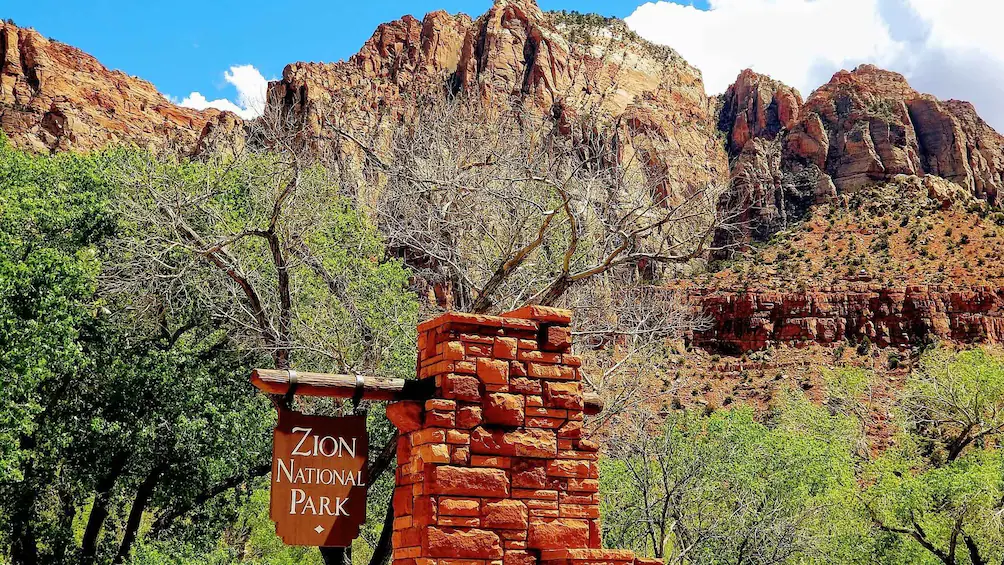
Click here to book an Expedia Hike – From Springdale: Greater Zion Scenic Hiking Tour
Popular hiking trails for different skill levels
- Easy Trails:
- Pa’rus Trail: 3.5 miles round trip, paved and wheelchair accessible
- Lower Emerald Pool Trail: 1.2 miles round trip, suitable for families
- Moderate Trails:
- Canyon Overlook Trail: 1-mile round trip, offers spectacular views
- Watchman Trail: 3 miles round trip, less crowded with great views of the Towers of the Virgin
- Strenuous Trails:
- Angels Landing: 5.4 miles round trip, steep with chain sections (permit required)
- The Narrows: Up to 16 miles round trip, involves wading through the Virgin River
Click here for Expedia’s Zion UTV Morning Tour
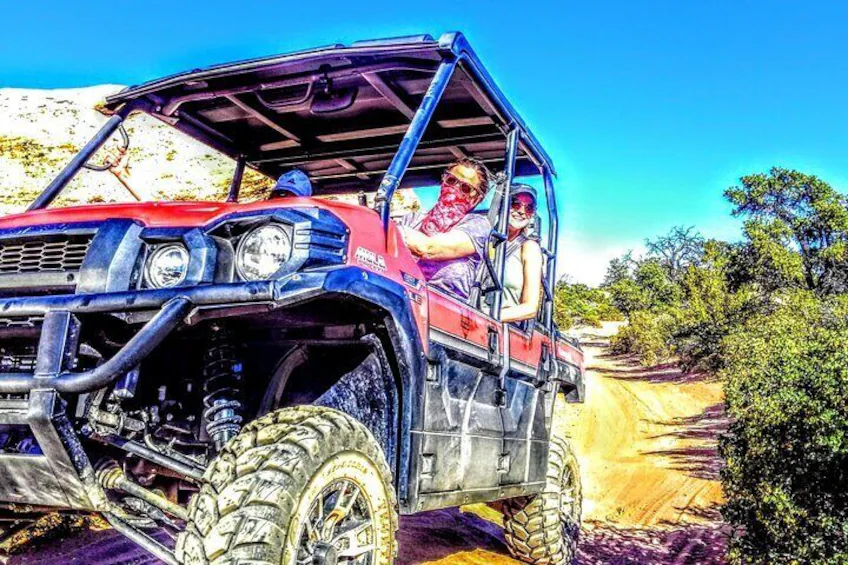
Safety precautions and park regulations
- Stay hydrated: Carry plenty of water, especially in summer months
- Check weather forecasts: Flash floods can occur suddenly in slot canyons
- Use proper gear: Wear sturdy shoes and sun protection
- Leave No Trace: Pack out all trash and stay on designated trails
- Wildlife safety: Do not feed or approach wild animals
- Permit requirements: Check if your planned hike requires a permit (e.g., Angels Landing)
- Shuttle system: Familiarize yourself with the park’s shuttle schedule and stops
Best times for photography and avoiding crowds
- Photography:
- Golden hours: Shortly after sunrise and before sunset for warm, dramatic lighting
- The Narrows: Midday for best lighting in the slot canyon
- Night photography: Zion offers excellent dark sky opportunities
- Avoiding crowds:
- Visit during shoulder seasons: March-April or September-November
- Explore early mornings or late afternoons
- Consider less popular areas like Kolob Canyons
- Seasonal considerations:
- Spring: Wildflowers bloom, waterfalls are at their peak
- Summer: Hot temperatures, but all trails and facilities are open
- Fall: Comfortable temperatures and fall colors
- Winter: Quiet and beautiful, but some trails may be icy or closed
Remember, Zion National Park is a natural wonder that deserves respect and careful exploration. By following these tips and being well-prepared, you’ll be able to safely enjoy the park’s breathtaking beauty and create lasting memories of your Denver to Zion National Park Road trip adventure.
Latest Updates on Denver to Zion National Park (2024)

For those planning a road trip from Denver to Zion National Park, there are several updates in 2024. Road improvements along I-70 and I-15 ensure a smoother 600-mile drive, especially through the mountainous regions. Additionally, enhanced signage along US-50 aids in navigating to scenic byways like Capitol Reef.
Recent roadwork and closures, such as on I-70 in Glenwood Canyon, could affect travel plans. The latest reports show that the area has fully reopened after months of repairs, improving travel times. It would be helpful to note this positive update and emphasize the importance of checking for road conditions prior to the trip.
At Zion, the park continues its permit lottery for the popular Angels Landing hike, essential for travelers from Denver to Zion National Park. Shuttle services have been expanded with extended hours during peak seasons, providing easier access to main attractions like The Narrows.
Zion is also promoting sustainable travel, offering new eco-friendly lodging options. These efforts are part of broader conservation measures aimed at accommodating increased visitation, especially from road-trippers.
Improved Road Conditions
The Colorado Department of Transportation has completed major improvements along I-70, a crucial stretch of the Denver to Zion National Park route. These upgrades include widened lanes and enhanced safety features, making the drive more comfortable and secure for travelers.
New Attractions En Route
Several new attractions have opened along the Denver to Zion National Park path. In Colorado, the Glenwood Caverns Adventure Park now offers a thrilling new roller coaster, adding an exciting stop for adrenaline seekers looking to break up their journey.
Zion National Park Updates
Zion National Park has implemented a new shuttle reservation system to manage crowds more effectively. Visitors planning the Denver to Zion National Park trip should be aware of this change and book their shuttle tickets in advance to ensure park access during peak seasons.
Sustainable Travel Initiatives
A new initiative promoting sustainable travel practices has been launched along the Denver to Zion National Park corridor. This program encourages travelers to minimize their environmental impact and support local communities throughout their journey, fostering a more responsible approach to road trips.
Digital Guide Launch
A comprehensive digital guide for the Denver to Zion National Park route is now available. This interactive tool provides real-time updates on road conditions, points of interest, and accommodation options, enhancing the planning and execution of this epic road trip.Remember to check official sources for the most up-to-date information when planning your Denver to Zion National Park adventure. These updates aim to make your journey more enjoyable, safe, and memorable, whether you’re a first-time visitor or a seasoned traveler on this scenic route.
Conclusion
The journey from Denver to Zion National Park is more than just a road trip; it’s an adventure through some of the most awe-inspiring landscapes in the American West. From the urban charm of Denver to the towering sandstone cliffs of Zion, each mile of this route offers unique experiences and breathtaking vistas.
As you traverse the Rocky Mountains, explore the red rock country of Utah, and finally descend into the stunning canyons of Zion, you’ll gain a newfound appreciation for the diverse natural beauty of this region. The national parks along the way – Rocky Mountain, Arches, Canyonlands, Capitol Reef, and Bryce Canyon – each offer their own distinct wonders, serving as perfect preludes to the grand finale that is Zion National Park.
Remember, the key to a successful road trip is balancing careful planning with flexibility. Allow yourself time to explore unexpected discoveries, take in the scenery, and fully immerse yourself in the natural wonders you encounter. Whether you’re hiking challenging trails, photographing stunning vistas, or simply soaking in the tranquillity of these protected lands, this journey promises memories that will last a lifetime.
As you embark on this epic adventure from Denver to Zion National Park, embrace the spirit of exploration. Let the open road guide you through changing landscapes and allow yourself to be awed by the natural marvels that await. Your journey from the Rockies to the red rocks is sure to be an unforgettable experience, showcasing the very best of America’s wild and diverse terrain.
